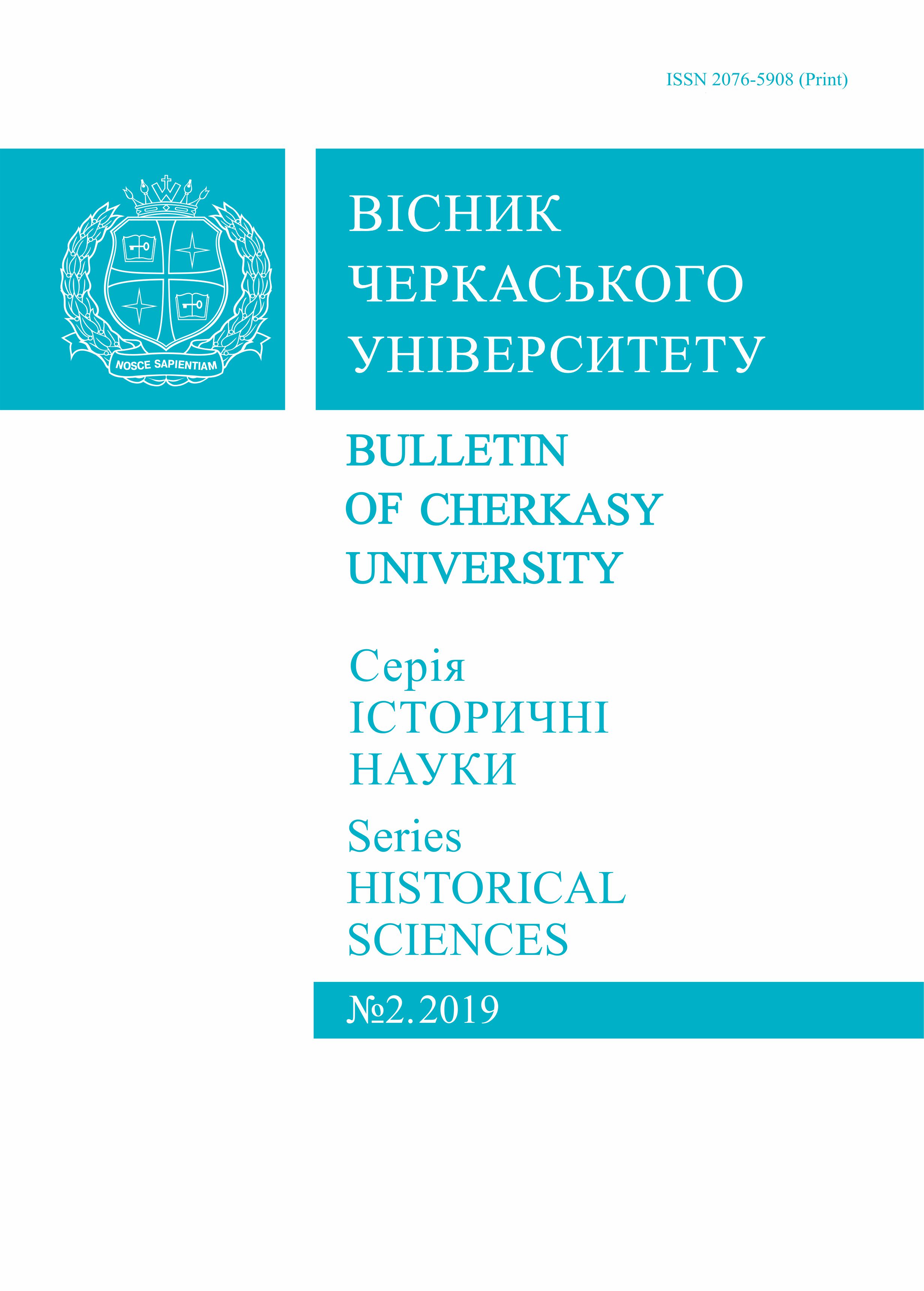Russian Pows’ Sexual Relationships in Germany and Austria-Hungary Camps in World War I
##plugins.themes.bootstrap3.article.main##
Анотація
Introduction and purpose. The goal of this article is to provide an overview of Russian POWs’ sexual relationships in Germany and Austria-Hungary camps in World War I throughout 1914-1918.
Results. An increasing number of studies have found that sexual relationships (from heterosexual to homosexual) used to be an integral part of the prisoners’ daily camp life throughout their captivity. Noteworthy, a growing body of literature has turned their focus to the effects of the First World War on sexual behavior and perceptions of sexual norms and identities. As far as the effects of long-term captivity upon masculine identity were a central theme of public discourse regarding prisoners during WWI, it was discovered that some camps did see masturbation developing as well as homosexual bonds were widespread, however, subsequently the seeking for sexual pleasure decreased as a result of the captives’ physical exhaustion. There were also heterosexual bounds; however, they were infrequent in the camps, since women were forbidden to work in hospitals, kitchens and other camp structures. Prison officers, having money, had more opportunity and access to prostitutes. At the same time, private captives, who began to be massively involved in various activities outside the camps since spring-summer 1915, had more opportunities to satisfy their sexual desires with local women, despite the condemnation of local authorities, flirted with soldiers.
Conclusion. It was highlighted that the durable imprisonment developed the crisis of masculinity, targeted POWs’ intimated feelings of vulnerability and they became increasingly emotional. Images of cross-dressing men became widely visible in prisoner camps theatre. POWs were depicted as men acting as surrogate women in a variety of ways, including building a domestic sphere for psychological and emotional relief. The single most striking observation to emerge from the study is the conclusion that the war created a ‘new class of men’ whose psychological scars altered their relationships with the opposite sex, the prewar gender and sexual order had been substantially changed by the WWI experience.
##plugins.themes.bootstrap3.article.details##
Посилання
Vischer, A.L. (1918). Die Stacheldraht-Krankheit. Beiträge zur Psychologie des Kriegsgefangenen. Zürich: Rascher & Cie, Verlag. (in De.)
Doegen, W. (1921). Kriegsgefangene Völker. Bd. I. Der Kriegsgefangenen Haltungen und Schicksal in Deutschland. Berlin: Verlag für Politik und Wirtschaft. (in De.)
Moritz, V., & Leidinger, H. (2005). Zwischen Nutzen und Bedrohung. Die russischen Kriegsgefangenen in Österreich (1914-1921). Bonn: Bernard & Graefe Verlag. (in De.)
Nagornaya, O. S. (2010). “Another military experience”: Russian prisoners of war of the First World War in Germany (1914-1922). Moskow: Novyj hronograf. (in Russ.)
(1917). In captivity. According to a former soldier P. Bakhmetiev, recorded E. Militsyna. Edition of the Front Communication Department at the Voronezh Provincial Committee V.Z.S. Voronezh (in Russ.)
Korsak, V. (1927). Captivity. Parizh (in Russ.)
Sudlenkova, N. (2006). “...Put your soul for your own friends”. About the monument erected 90 years ago by Russian prisoners of war. Russian word, 6. URL: www.ruslo.cz/articles/47 (in Russ.).
Abdrashitov, E. (2006). On the social nostalgia of Russian prisoners of war in the World War I. Sociological research, 4. 131-135 (in Russ.)
Levin, K. (1931). Notes from captivity. Moscow (in Russ.).
Kirsh, Ju. (1925). Under the boot of Wilhelm (From notes of ordinary prisoner of war No. 4925). 1914-1918. Moscow, Leningrad: Gosizdat (in Russ.).
Kobets, O. (1993). Notes of the prisoner. Adventures and Impressions of the World War I Participant. Kyiv: Globus (in Ukr.).
Revin, I. A. (2009). Mogilev peasants: the family tree and the history of the Quiet Don. New Historical Bulletin. 2 (20), 115-124 (in Russ.).
State Archives of Chernivtsi Region (SACR), F. 4. Chernivtsi County Administration. 1856-1918, Description 1., Case 1620. Directives of the Ministry of Internal Affairs, Vienna, on the procedure for issuing permits to Russian prisoners of residence in Austria, 1918 (in Ukr.).
SACR, F. 3. Local administration of Bukovina Chernivtsi. 1854-1918. Description 2, Case 32424. Instructions of the Ministry of Agriculture on the Procedure for the Use of Russian Prisoners of War in Agricultural Work during the Period from the Armistice to their Repatriation, 1918 (in Ukr.).
SACR, F. 7. The Zastavnja district administration. 1856-1918, Description 1, Case 448. Directives of the Presidium of the Bukovyna Regional Administration for 1918 (in Ukr.).
Remark, E.-M. (2001). On the Western Front unchanged, transl. Ju. Afon’kin. St. Peterburg: Kristall (in Russ.).
Ulyansky, A. (1925). In captivity (1915-1918). Leningrad: Gosizdat (in Russ.).
Nagornaia, O. S. (2011). “The Colonel sobbed soundlessly, tears were in the eyes of all officers...”: communication of emotions behind a wire fence. Dialogue with Time, 35, 195-205 (in Russ.).
(1916). Russian prisoners in Austria-Hungary (from reports of sisters of mercy N. Maslennikova, A. Romanova and Princess N. Yashville). Red Cross Bulletin, 6, 2007-2026 (in Russ.).
Uspenskiy, A. A. (1933). In captivity. Officer Memories. Part 2. 1917-1918. Kaunas (in Russ.).
Rachamimov, A. (2006). The Disruptive Comforts of Drag: (Trans)Gender Performances among Prisoners of War in Russia, 1914-1920. The American Historical Review, vol. 111, 2, 362-382.
Tolstoy, A. N. (1979). The Road to Calvary, vol. 1. Dnepropetrovsk (in Russ.).

